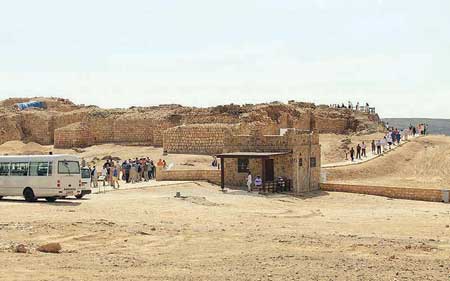|
| |
Tourist spots: Al
Baleed Park , Salalah, Oman
Oman |
Expenses in Oman |
Tourism |
Tenders|
Museums|
Associations
|
Oman forum |
NRI |
Jobs |
Ministries|
Links
English Arabic translation |
OIFC
Electric Water bills|
Asian Beach games 2010|
Omani Labour law|
Embassies
References:
Citizen & Residents |
Business |
Visitors |
Cinema
booking |
Online Payments |
Useful information

Coumnists:
Sangeetha
Sridhar,
Dr.Rajan Philips,
Hasan Kamoonpuri
Newspapers:
Times of Oman,
Oman Observer,
Oman Tribune,
The Week
NEW
Jobs in Muscat /
List of schools in Oman
/
universities and colleges in Oman

Al Baleed park offers battery-run cars for
children , while others love to wander around to have a look at the Arab
culture many hundreds of years old.
Boating is another attraction for
the tourists, especially the children. The ROP-managed motorboats take the
tourists for a tour in the natural lake inside the park. The lake is well
maintained and boating in it gives the tourists great relief after having a long
tour of the park. The history of Al Baleed dates back to 2000 BC when it had its
main settlement at the eastern outskirts of Salalah. During the late Iron Age it
was an active central city and was prosperous during the Islamic era. It has
been mentioned in the memoirs of 13th century Moroccan Explorer Ibn Battuta that
the city of Al Baleed, situated in the immediate vicinity to the Indian Ocean,
was one of the important Omani harbours, which traded not only the Arabian gold
and the frankincense, but also horses and other goods to Indian harbours.
Since 2001 the three archaeological sites — Al
Baleed, Khor Rori and Sisr, as well as the Frankincense Park Wadi Dawka — have
been registered on the Unesco list of World Heritage sites. The park is clearly
separated into two parts. One entrance area north to the site and separated by a
water arm of the old harbour and the site itself, well protected as in old days
by its moat on three sites. An elegant bridge connects both areas. The entrance
area being free of any archaeological remains consists of a frankincense centre
as exhibition ground with administration, sufficient parking and a refreshment
zone. The site has a 2.2-kilometre long access path built on protective
geo-textiles on top of the archaeological surface. Along this path several
excavations took place, the great mosque, the citadel, a graveyard mosque and
some residential houses.
According to experts, the city overlooks the
sea. It was rectangular in shape and was surrounded by a fence with three gates,
which were used as entry points. Excavations were conducted into two phases in
1978 and focused on the greater mosque which was a high rectangular building
surrounded by balconies from all sides. This type of balconies was used in most
of Dhofar Governorate. From its large wall and strong forts it is clear that the
city was renovated in the style of other contemporary Islamic cities during Al
Habudheen era (13th century AD). The city benefited from the prosperous
frankincense trade and was commercially linked to ports in China, India, Yemen,
East Africa, Iraq and Europe.
Chinese traveller Jan Jokao
wrote that frankincense was one of the main commodities produced by the city,
and research has revealed that at one time the Chinese city of Quanzhou imported
approximately 174.337 kilograms of frankincense from Al Baleed. The famous
traveller Marco Polo (1285) described the city as prosperous and one of the main
ports on the Indian Ocean, and said it was a booming commercial centre. In
1846, traveller HJ Carter wrote about the city, pointing to its architecture and
grand mosque, which he described as exceptional. Records of Miles (1880) and
Bentes (1890) are also available regarding their visit to Al Baleed. According
to Italian trader Boli (1903), “It is a great and beautiful city overlooking the
sea” and that ships from many places called at it.
( Courtesy :
Kaushalendra Singh, Oman
Observer.
Read the full article )
Tourist attractions
| |
|



